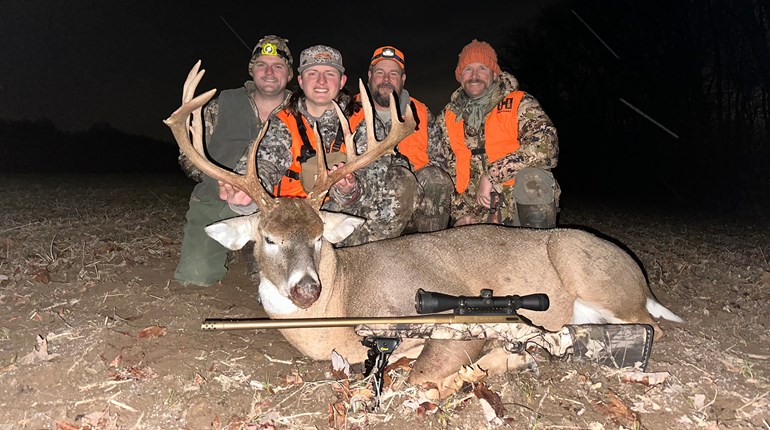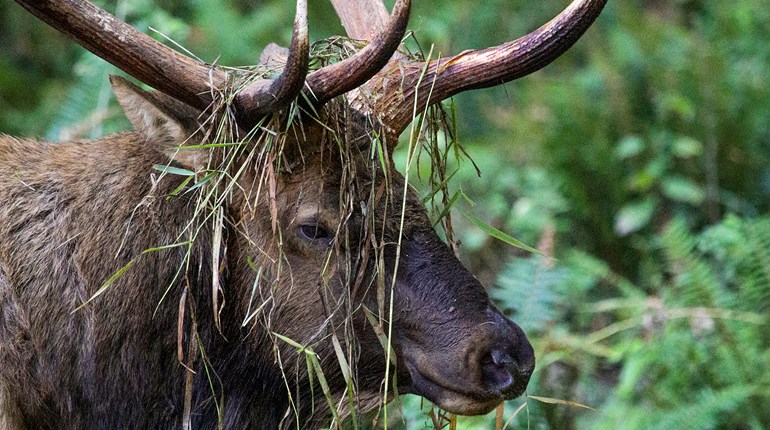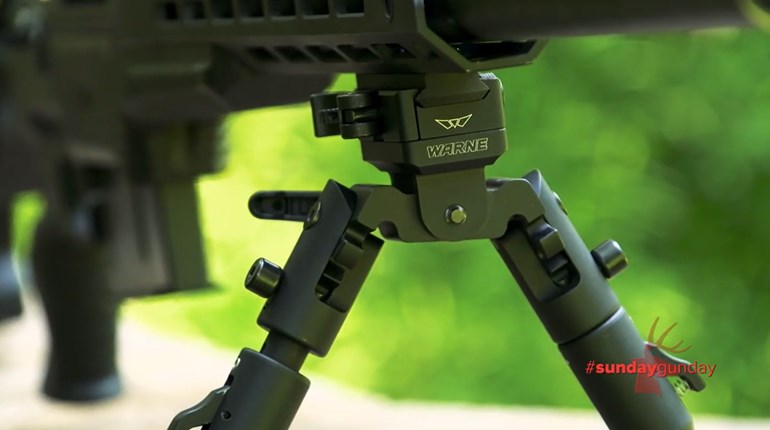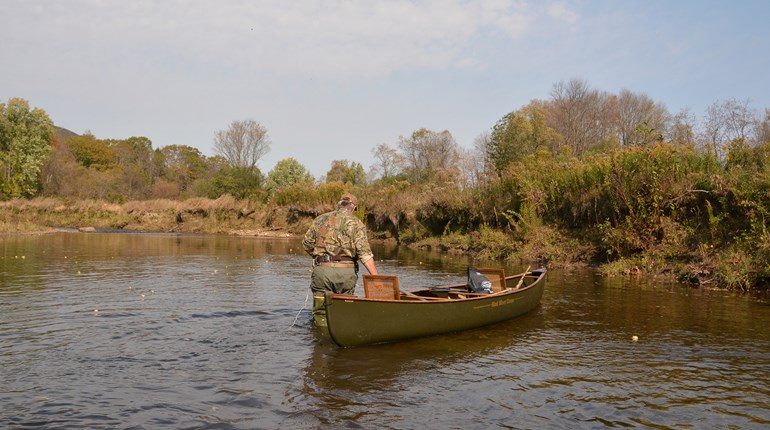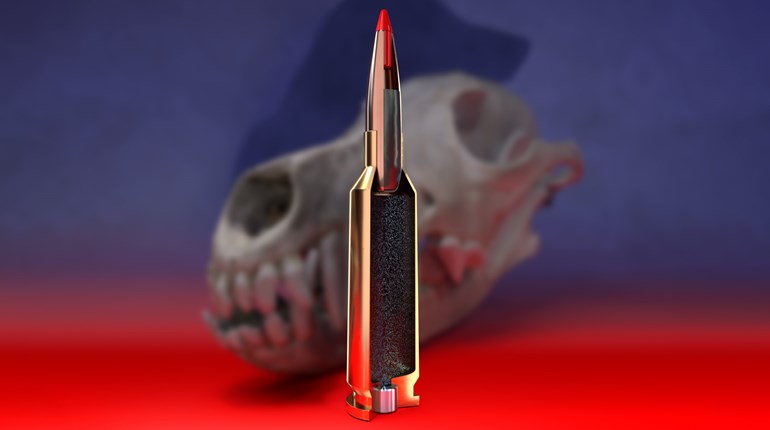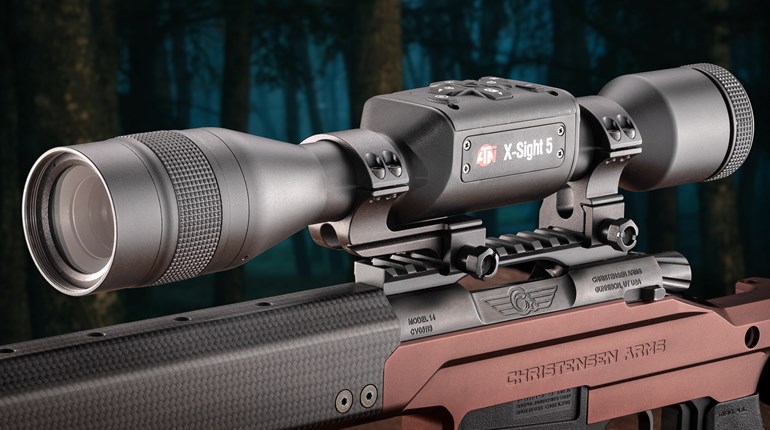
This is the tale of a hunt in the mountains of South Africa for a Cape buffalo that required every ounce of energy, conviction and willpower I could muster just to keep up with my Afrikaner professional hunter. This is a tale of sweat, torched calories, twisted ankles, racing hearts and more than a few expressed expletives.
But before I get into “all that” let me say it is “all that” because it is the tale of a hunt for Cape buffalo with a handgun. That’s right, I pursued what many experienced African hunters call “Black Death” with no more than a revolver in hand. It was a big revolver, to be sure, but some would say it was “merely a handgun.” My outfitter thought I might’ve been a bit touched.
I wasn’t. But in fact I could’ve touched the bull before I shot. … Well, almost.

The Task at Hand
The Cape buffalo is a most distinguished member of Africa’s “Big Five.” In this case “big” does not refer only to the size of the game but also to the capability of each member of the group to inflict pain on a hunter. “Black Death,” as the buffalo has been nicknamed, is the most ubiquitous member of the exclusive group and, as the most accessible member in terms of population dispersion and cost to pursue, the member on which most hunters of Africa begin their quest for dangerous game. It is the subject of much lore around campfires. Its reputation as a tenacious and vindictive adversary is well earned—and documented.
I realized all that as I checked zero in camp on day one. As I pulled my rig from its case, I had to admit to myself that I was actually in Africa, and actually about to tackle this illustrious bovine with a revolver. Tollie Jordaan, my outfitter, expressed some concerns, but I figured to allay them.
First, I could have told him my shooting on the range would dispel some of his concerns; nonetheless, I proved the point. Secondly, in terms of handguns, a rather large revolver was to be deployed. Third, and most importantly in pursuit of any dangerous game, we would attempt to get as close as possible to our quarry before taking a shot.
After our range session, we drove a long way up into the mountains on a bumpy, heavily rutted dirt track to a variety of water sources at various altitudes in search of fresh buffalo sign. It was a physically demanding day, a harbinger of things to come. That afternoon my PH, Pieter Jordaan (Tollie’s son), decided a fresh start in the morning was warranted, so we took the remainder of usable daylight to hunt nyala, which I am pleased to report was successful.
That said, buffalo was still pending.
Choosing the correct tools for hunting Cape buffalo with a handgun is critical, not unlike the choices a rifle hunter must make. Since this would be a revolver hunt at bad-breath distances, I chose a platform and caliber that was ideal for a potent first shot and fast follow-ups should they be needed (or not).
With those criteria in mind, I went to Magnum Research for its outstanding BFR (Biggest, Finest Revolver). The BFR comes in two flavors: stretch-frame models that accommodate rifle cartridges such as the .45-70 and .30-30; and short-framed models offered in a variety of hard-hitting calibers from .44 Magnum all the way up to .500 Linebaugh.
I chose one of my favorites, the .500 JRH (designed by custom revolver builder Jack R. Huntington), essentially a shortened .500 S&W Magnum that fits in the confines of a “normal”-sized revolver but still packs a sizeable wallop on both ends. I ordered mine with a 5.5-inch barrel and Magnum Research’s recently released “Bisley” grip frame. Much like Ruger’s Bisley (also an interpretation of the original offered long ago by Colt), this version has all of the pluses and none of the minuses. I mounted an Ultradot Four red-dot sight via Leupold steel 30mm rings atop the factory-supplied scope base, with liberal doses of red Loctite.
Load development was handled by yours truly with Starline brass, CCI magnum primers and stiff doses of Winchester 296 under the premier big/dangerous-game bullet, the Kodiak Punch by Rintoul Enterprises. This bullet is a solid brass flat-nose design, with a lead insert for additional weight. Each weighs 420 grains. I pushed them to right around 1400 fps and tested the combination (prior to South Africa) on a water buffalo in Hondo, Texas, with Action Outdoor Adventures. The load and revolver proved accurate, and terminally effective.
The .500 JRH is utterly capable in any gun. But that day on the range, secretly to myself, I had to admit some would say, in terms of size to mass of game, the gun and its loads looked … well, inadequate.
Climb, Bump, Run, Repeat
Day two’s buffalo chase commenced at 8 a.m. As if guided by an act of clairvoyance, I ate a really large breakfast, loading up on the fuel that would be absolutely necessary to actually endure it.
The terrain we hunted proved very unfriendly, particularly when trailing behind our superman PH, Pieter, and his marathon-runner tracker. A clear pattern emerged early on. We picked up a fresh, lone buffalo track then followed it up a mountain strewn with loose rocks. After struggling to the top, we discovered the buffalo had winded us, and instead of running a couple hundred yards, the bull ran kilometers. Then we would hastily make chase, get close, bump said animal and he would run—kilometers. Then we would make chase, get close, bump, run then repeat. This went on nearly the entire day. At one point, the bull ran down the mountain (the one we were currently tracking it on) and straight through a fence, not slowing its pace in the least. In fact the fence gouged the bull enough to cause it to leave a blood trail we could follow—not that we wanted to anymore.

Eventually we gave up on that long-winded buff and got on a herd of roughly 20 animals then commenced to do the “bump-and-run” the remainder of the day. It was utterly exhausting, and utterly unsuccessful.
Day three began, after breakfast, with some verbal consternation again expressed by Tollie. I flashed back to the trauma of Catholic primary school and a particularly “stern” nun named Sister Anila. (Her name, not coincidentally, rhymed with Attila. Okay, so I wasn’t the best behaved student and freely admit I may have rightfully deserved some of it.) Tollie again wanted to see my bullet choice, and asked a few more questions about my particular load. He was clearly more than a little doubtful as to the efficacy of the .500 JRH/punch bullet combination being used by your humble author. My assurances seemed to allay his immediate fears; however, his doubts clearly lingered while he watched us drive off for round three of the ghost chase we’d started two days earlier.
Hunting a different area on day three, we checked more waterholes for fresh buffalo sign, but no buffalo had visited these water sources for days. There was no fresh spoor. A couple of hours into this routine, we got word that a lone bachelor bull had been spotted crossing an open area on the other side of the mountain we were facing. We jumped aboard the Toyota Hilux, made our way around the base of the mountain, found a suitable place to park then made way on foot in search of the next illusive target of interest.
We struck out diagonally up the rather steep-sided mountain, stopping at roughly the halfway point. Our tracker, Anele, set out on his own to see if he could pick up this supposed track made—by now—hours earlier, according to the report we’d received. We’d been breaking for a few minutes, giving our aching muscles a much appreciated respite, when Anele called on the radio to say he had found a track. I have to say I rolled my eyes. But stranger claims have been made that have proven true, so we dropped down to meet Anele and to follow the lone track.
Well, we tracked clear up the other side of the mountain, the bull apparently heading to even higher elevations. At times even I could clearly track its progress up the steep slab. But after a while the obvious sign dissipated and the much less obvious, broken twig-type sign replaced it. Still, thanks to the super-human trackers in the lead, the twigs and other less obvious sign enabled the party to keep moving in the supposed direction of day three’s apparition.
At last we broke the crest of the mountain—and made an abrupt 180-degree turn in the opposite direction. At this point we had two trackers up front essentially sniffing the ground. Pieter and I followed; I wondered if we had wasted half a day on this particular “sighting.”
Danger Close
Just about the moment that thought entered my fatigued mind, the trackers hit the deck as if responding to incoming mortar fire. It caused a chain reaction down the line as we all took a knee and began nervously scanning the area looking for the threat.
Pieter crawled forward and confirmed what the two trackers had just seen: There was a lone bachelor bull feeding in a stand of trees just ahead and to the right of us. My heart began beating with more purpose as I eased my revolver from its holster. We slowly crawled on hands and knees to the edge of the stand where, peering around the bush to my immediate front, I could clearly make out the black mass standing just ahead. The tempo of my heartbeat increased by at least 50 percent. Pieter and I inched farther forward to get a better view and to assess the bovine situation that was uncomfortably close. Fortunately the wind was behaving in our favor, something that hadn’t been the case for two days. But would it hold?

Looking for the best vantage point from which to launch my Punch, I spotted a tree to the bull’s immediate front. I quietly explained I needed to inch forward to that tree, and Pieter nodded.
With my revolver in hand now, and the red-dot switched on, I slowly crawled forward, making each move carefully and deliberately, making sure not to step on anything that would betray my movement. At said tree I realized I had no clear field of fire without standing. I would wait until the bull gave me the opportunity to stand. Lady Luck smiled down and the bull turned, pointing his southernmost end in my direction. I hastily stood and rested the revolver on a branch to my immediate front and carefully brought the hammer back to full-cock. The bull turned sideways, giving me a broadside shot, prompting Pieter to excitedly whisper, “Shoot him!”
The problem was the bull was backlit by the sun—I couldn’t make out one iota of detail besides noting which end was the front and which end was the rear. Abruptly the bull whipped around and looked right at me! Apparently the wind had shifted as now the bull was fully aware of my presence and, damn, was he close. Pieter urged, “Shoot him in the chest.”

I put that dot on his chest and squeezed, the recoil all but unnoticeable as the .500 shattered the eerie silence. At the shot the bull reared up as if hit by a freight train, clearly feeling the effects of the 420-grain pill. Pieter screamed, “Good shot—shoot him again!” I momentarily lost sight of the bull but then he broke to my left, cleared some brush and so I hit him again, slowing him by a half step. Then he was behind a bush, obstructing my field of fire … and when he cleared it I sent shot No. 3 downrange, the bull hunching up in protest as the shot connected. Again he was obstructed by a bush, but when he cleared I shot again and he crashed to terra firma. At that point, I paid the insurance, putting another in his spine as he laid prostrate in a clearing. Holy smoke we were close to him. We were danger close, not potentially danger close.
 We had closed to within 15 yards of him before I fired the first shot. You read that right: 15 paced-off yards. We got lucky, but I like to think skill played at least a minor role in this story—well, skill and a BFR and a very big, effective bullet.
We had closed to within 15 yards of him before I fired the first shot. You read that right: 15 paced-off yards. We got lucky, but I like to think skill played at least a minor role in this story—well, skill and a BFR and a very big, effective bullet.
These animals are programmed to run at the slightest notion of danger, and are very hard to stalk closely. This is the price to be paid when your chosen firearm is distance-challenged. Quite frankly, I wouldn’t have it any other way. We earned this buffalo fair and square. We were close enough that any mistake could have exacted a colossal toll on everyone involved. While the likelihood of experiencing a Cape buffalo charge is remote, it does happen fairly regularly. Keep in mind the very day I took this buffalo, South African PH Claude Kleynhans was killed by an unwounded buffalo while on safari with a client. The only point I am trying to make is that at 15 yards a charge would be very bad—not that I can come up with a scenario where a charge would be good, but you get the gist.
Tollie's African Safaris
I booked a seven-day safari with Tollie’s African Safaris at the suggestion of AH Editor in Chief Scott Olmsted. He first hunted with the outfit in 2002, again in 2005 and has stayed in touch with the entire family in South Africa’s Eastern Cape province ever since. Owned and operated by Tollie and Karen Jordaan, the outfit is a family operation where the client is treated to comfortable boarding, wonderful food and outstanding hunting.

Tollie responded to my inquiry positively but emphatically stated that getting within handgun range of a Cape buffalo would not only be very difficult, but dangerous. He had me at difficult.
Tollie is the fifth generation of Jordaans on the property. The Jordaan land is rough, mountainous and rocky, but breathtakingly picturesque. Game is abundant. Plains-game hunts currently offered include seven-day/three-trophy and seven-day/five-trophy packages for less than the price of an elk hunt in the American West. The animals you will have to work for, despite their abundance. It is by no stretch a barrel-shoot, particularly not with a handgun. You will have to put in your time and hope good luck makes an appearance. For more information, visit huntinginafrica.website.

The Rig
My Magnum Research BFR was carried in a custom shoulder holster of elephant leather by Graveyard Jack’s Sixgun Leather. The leather not only looks great but functions perfectly in the field.












